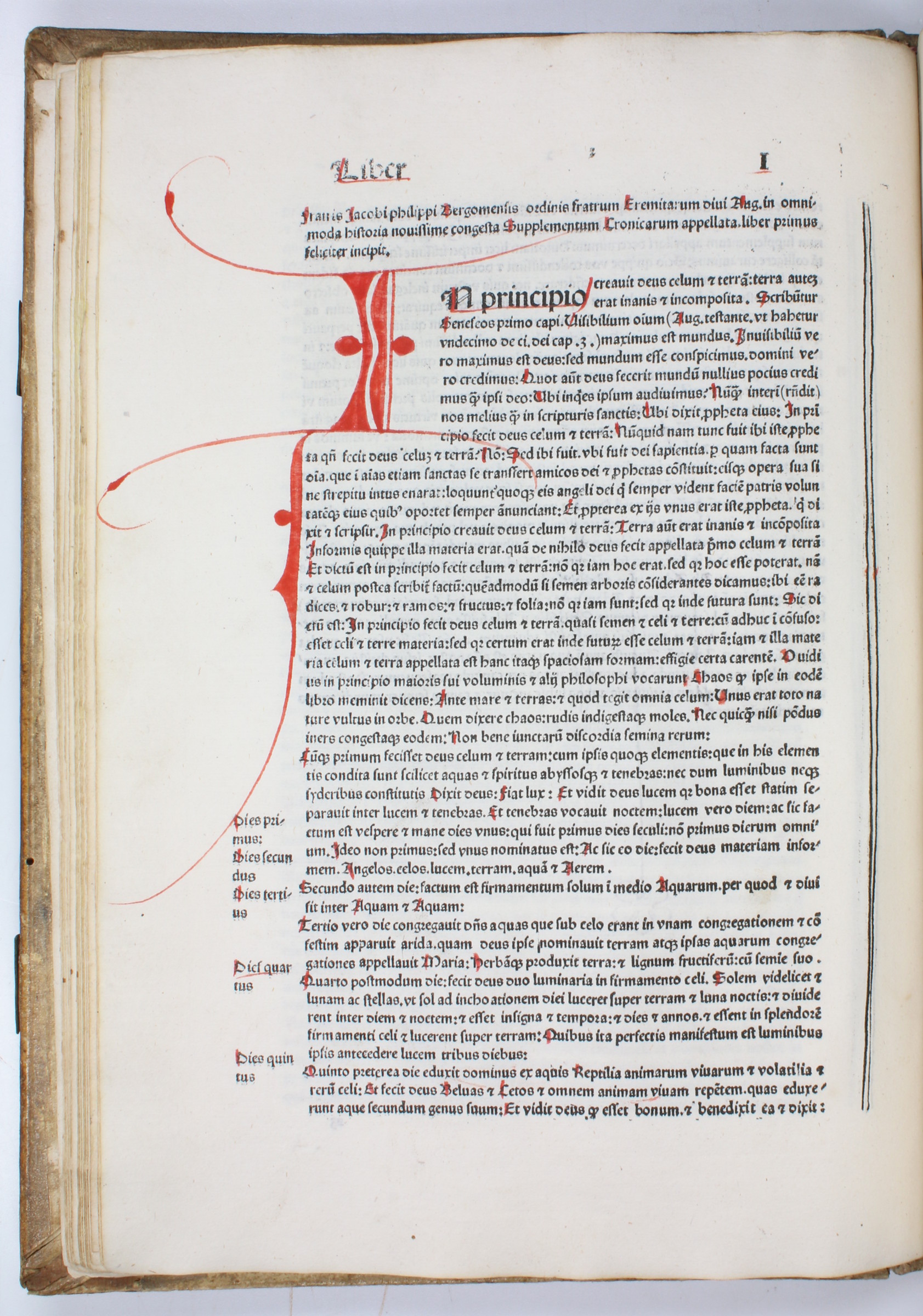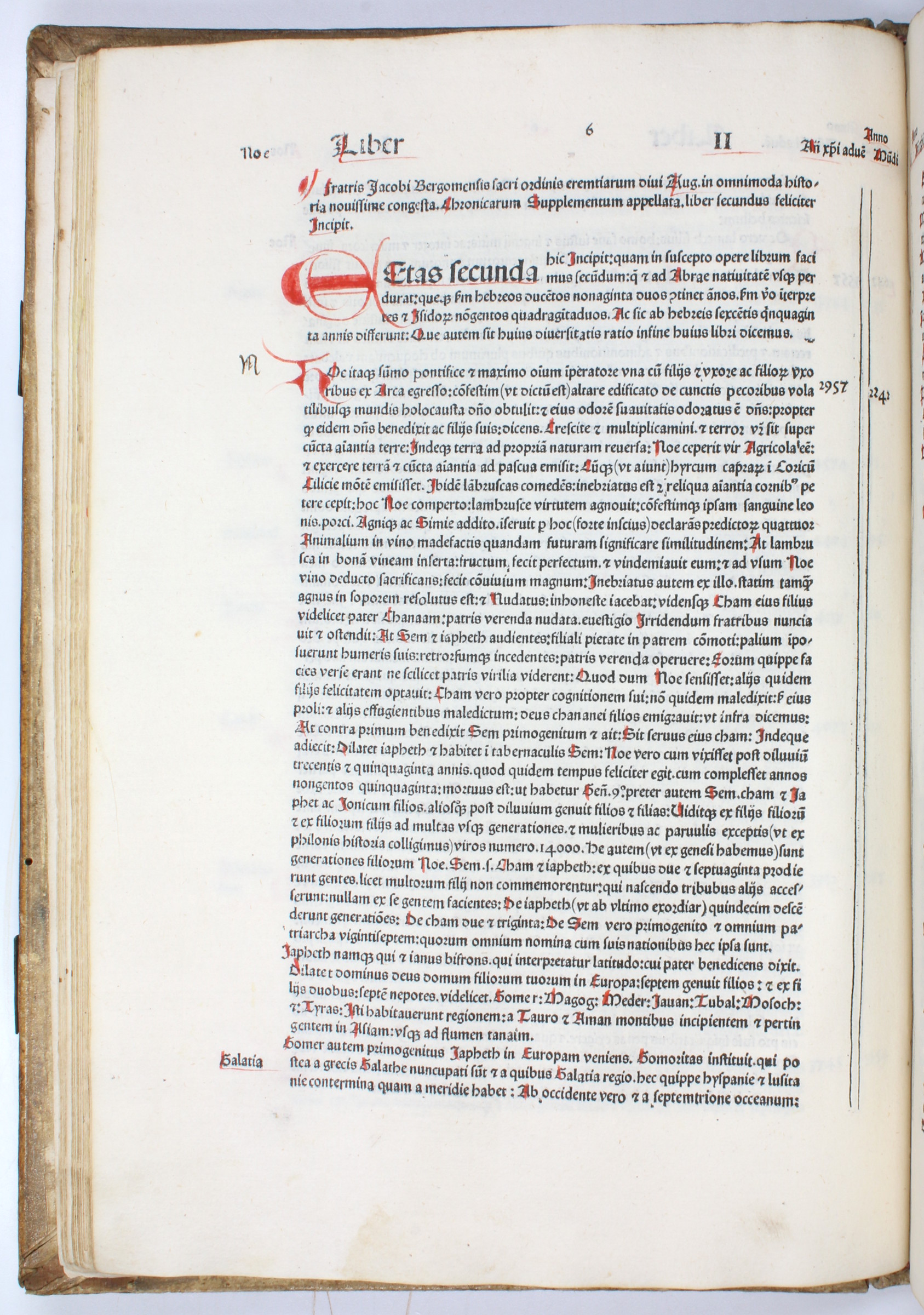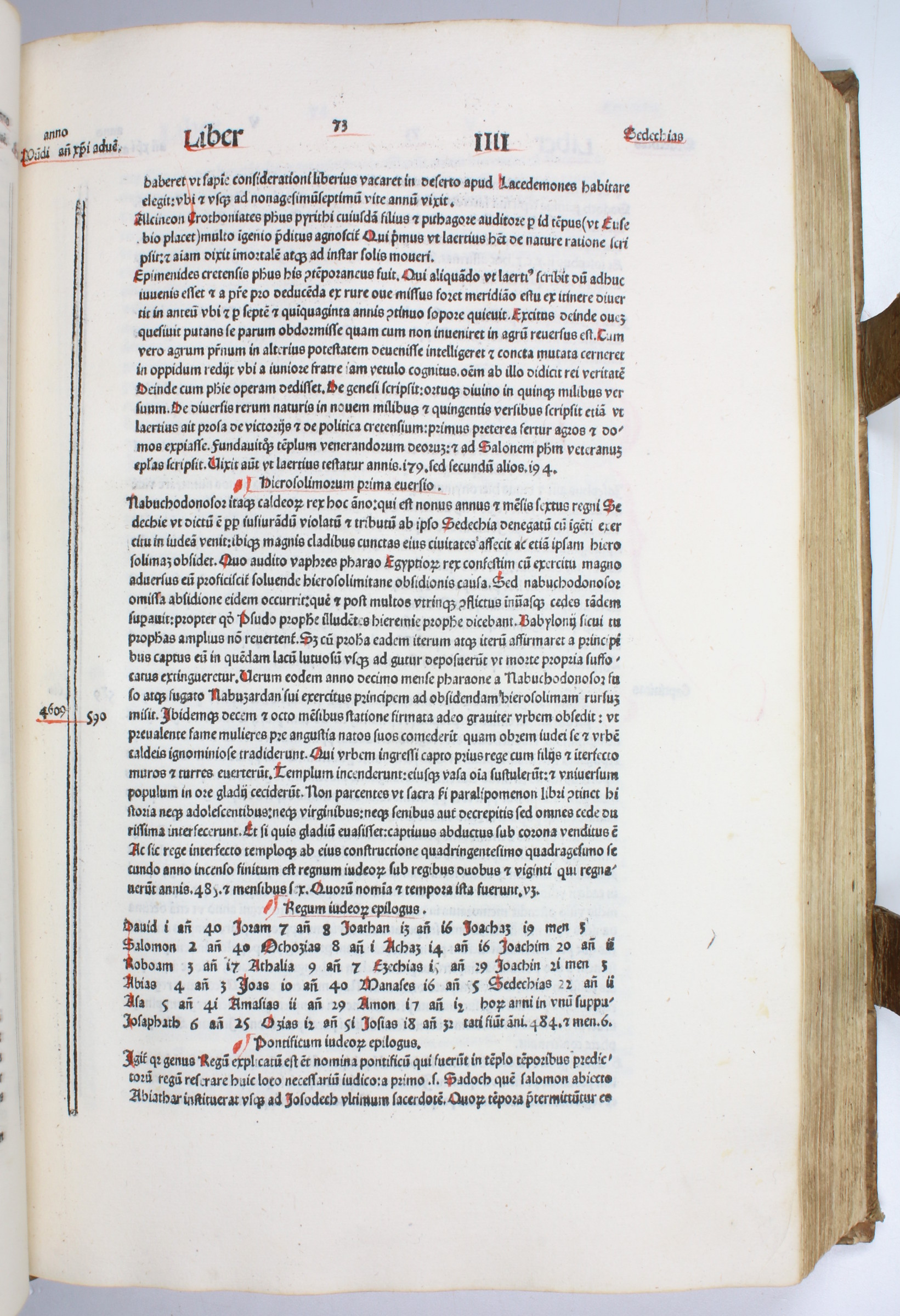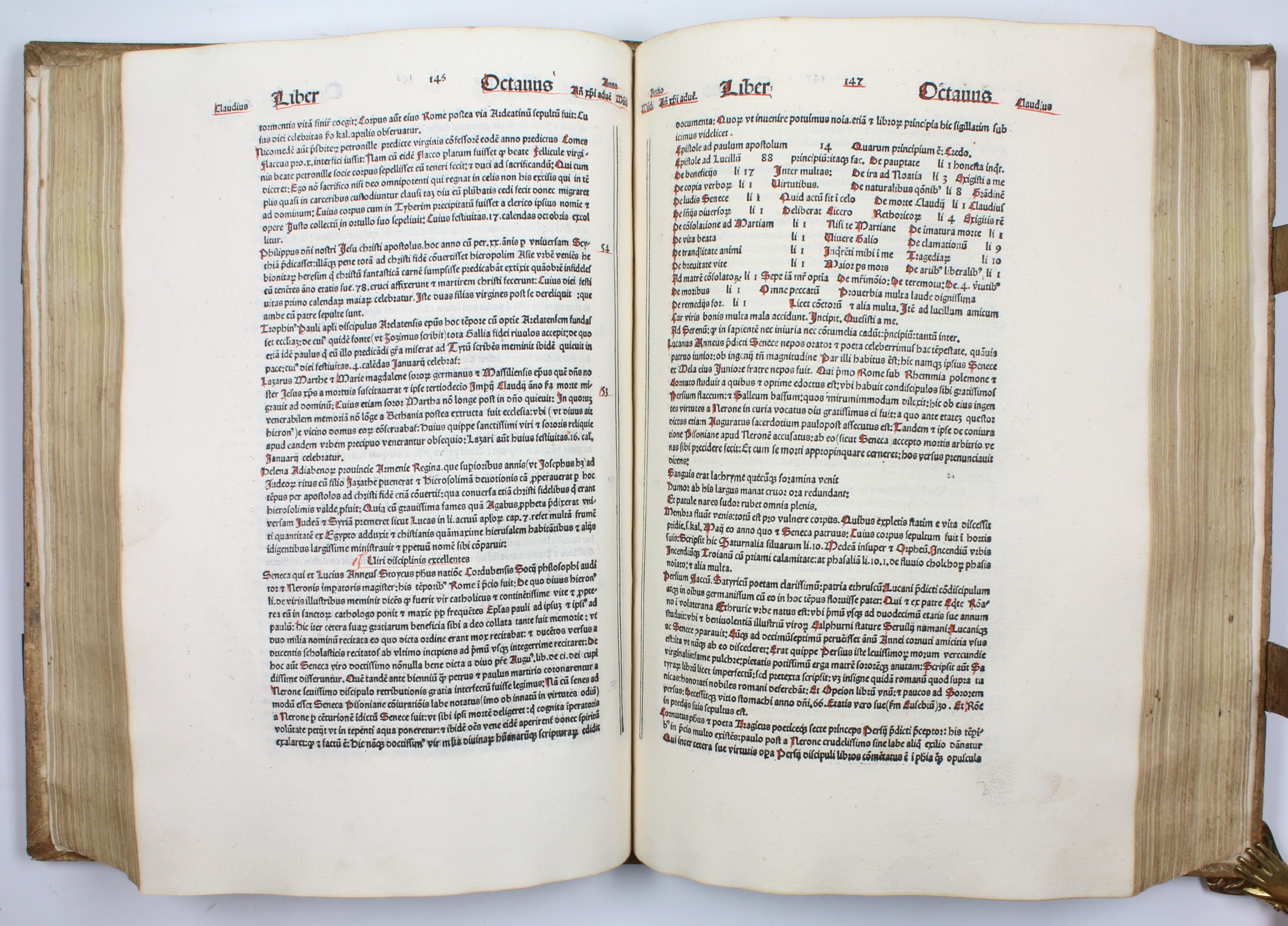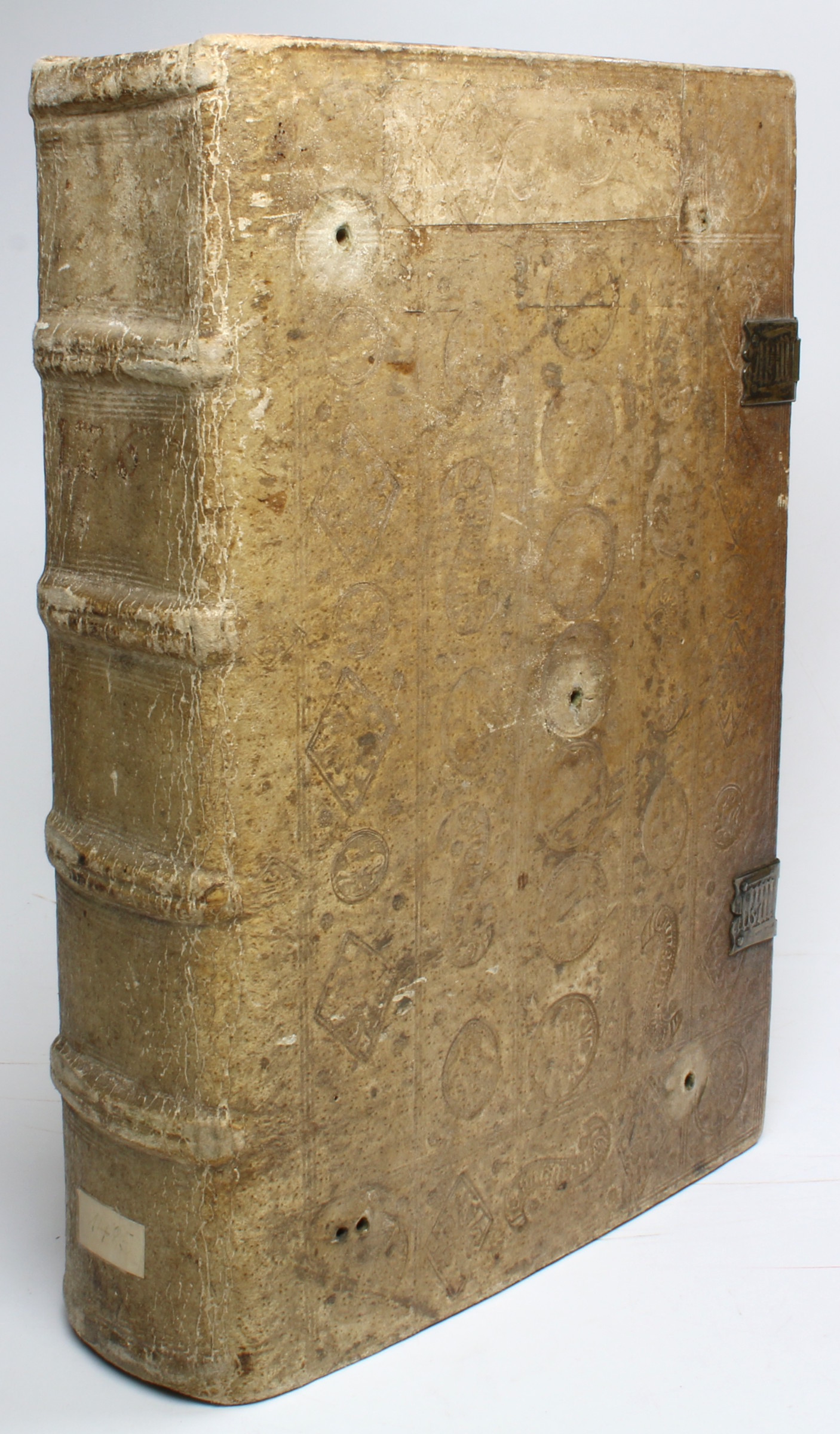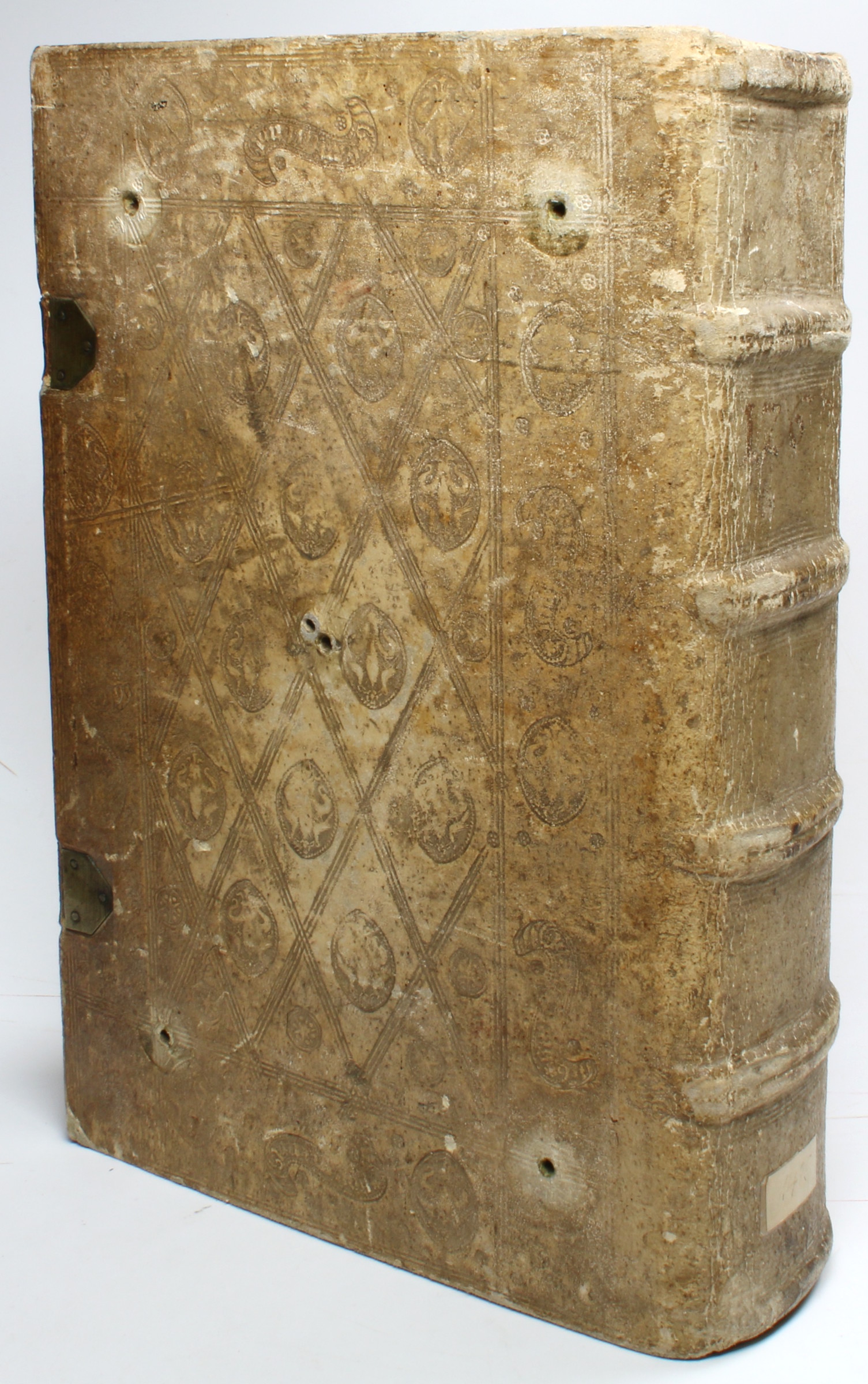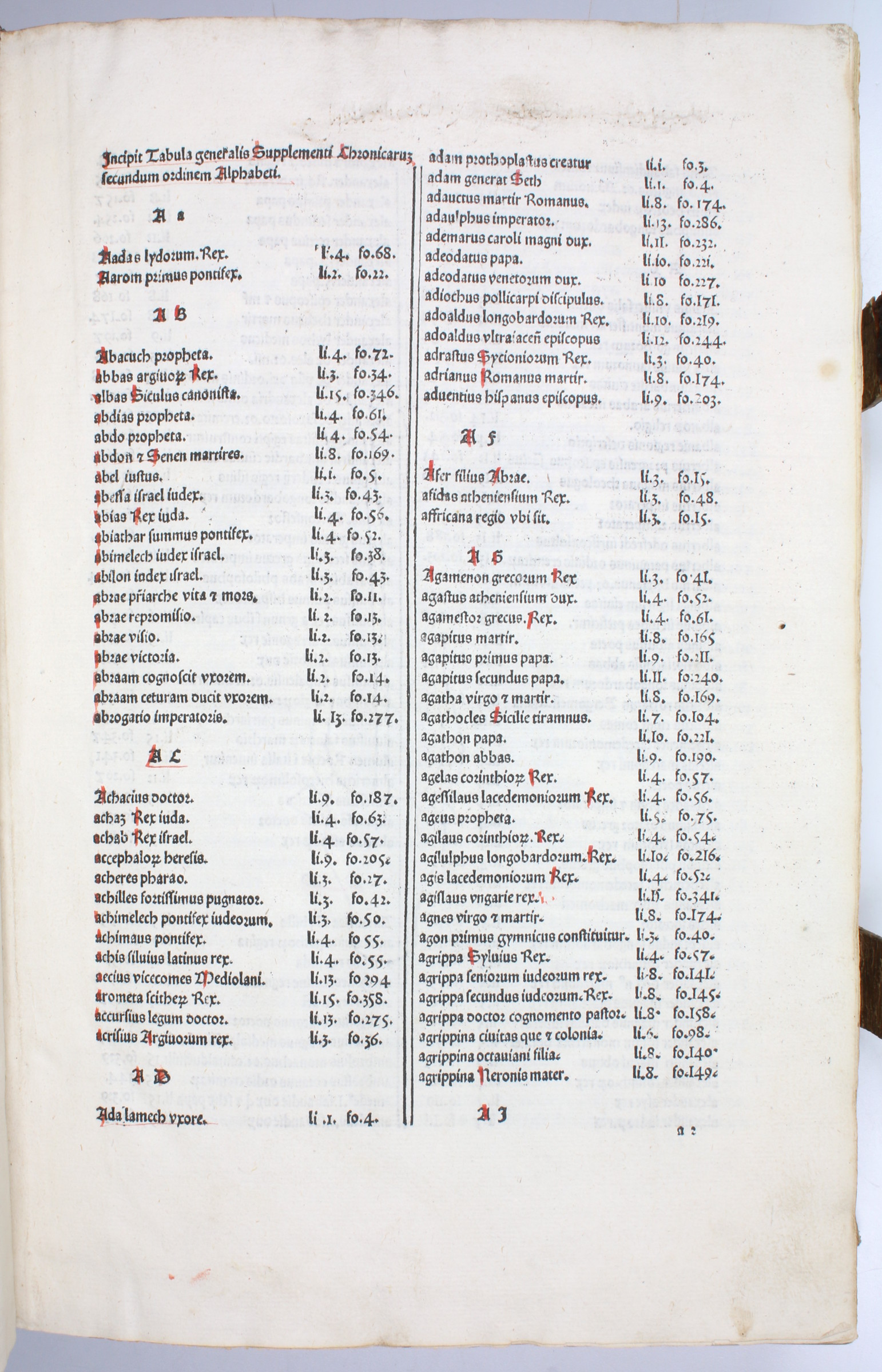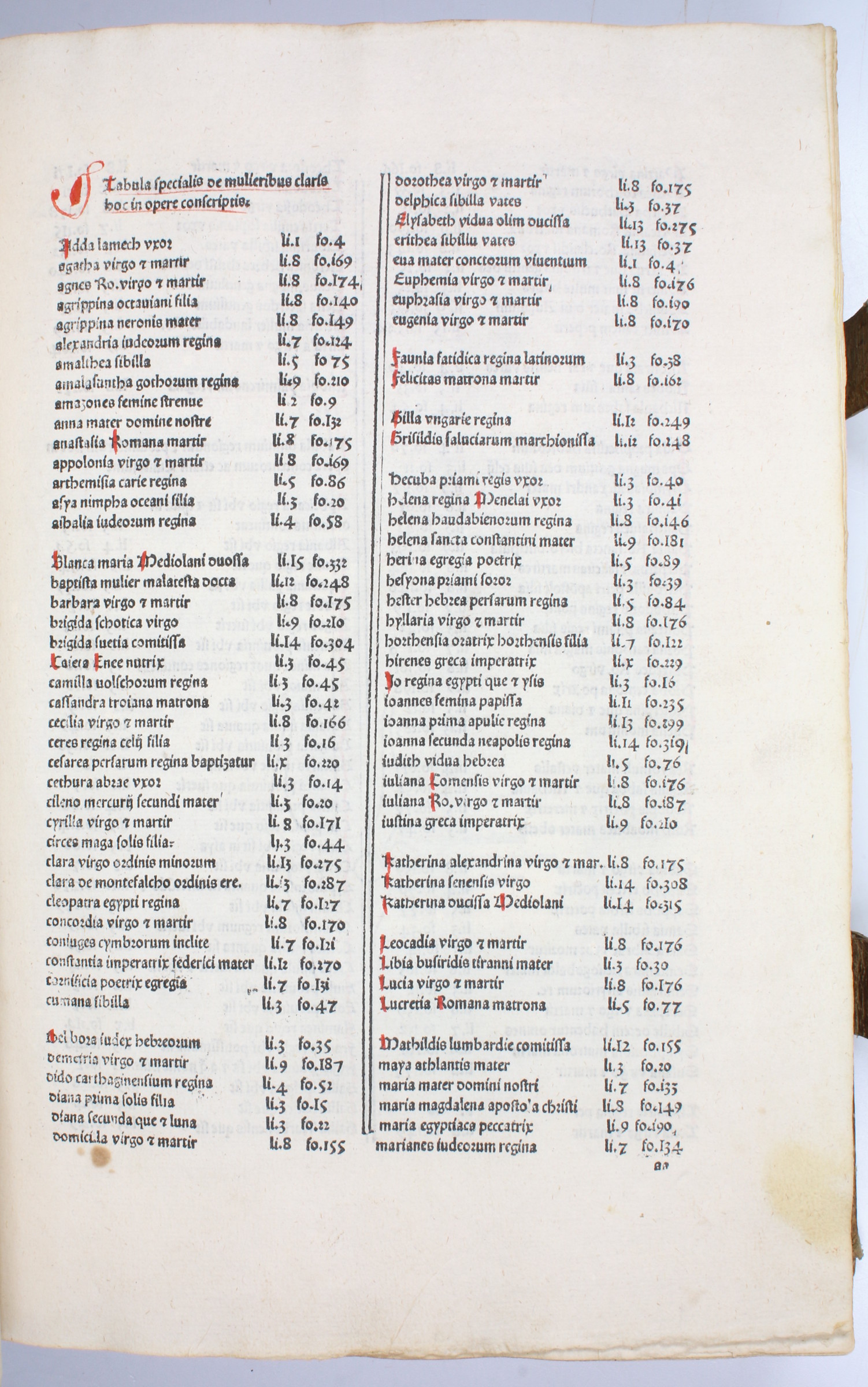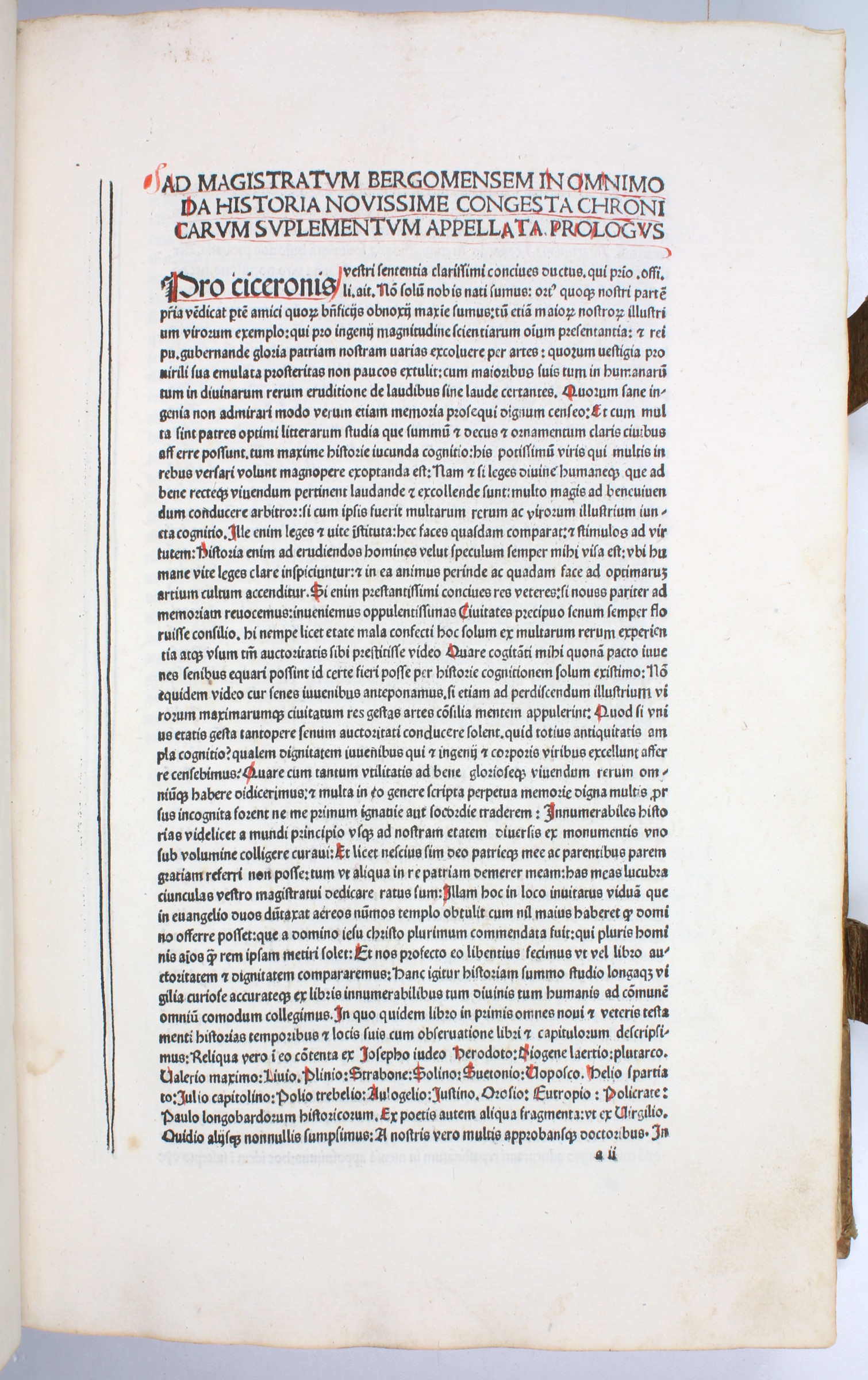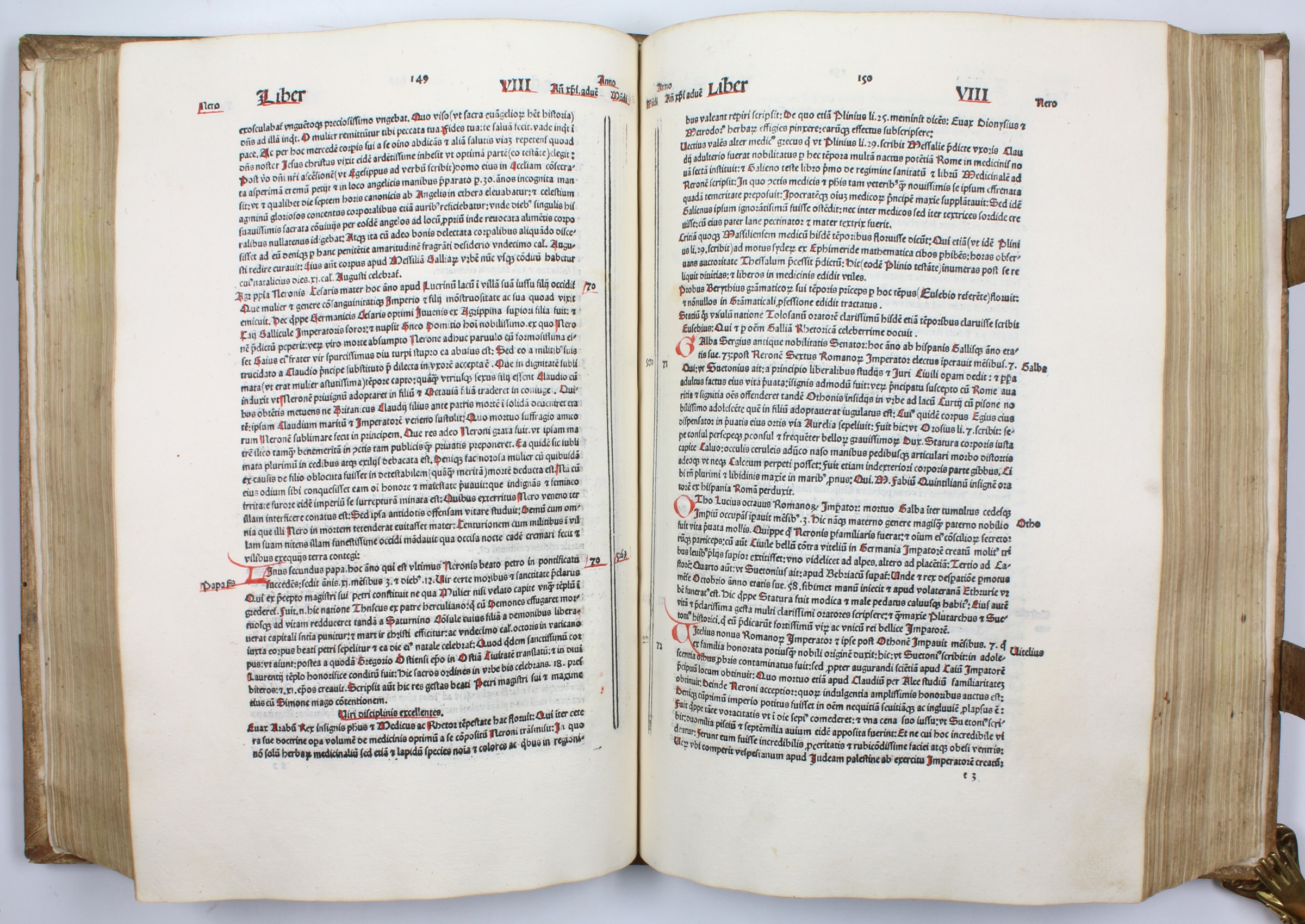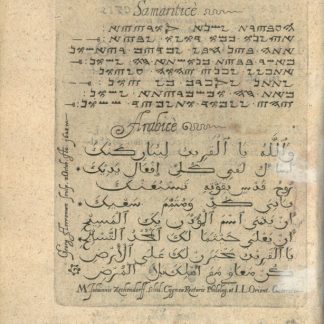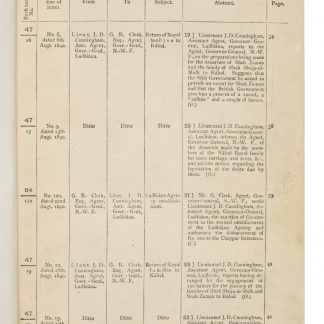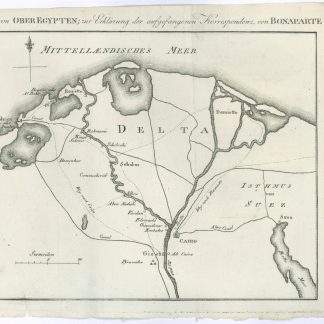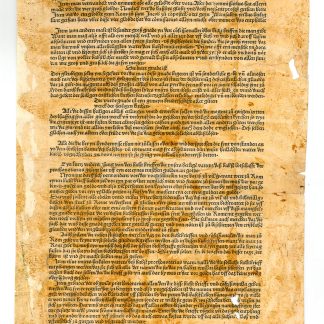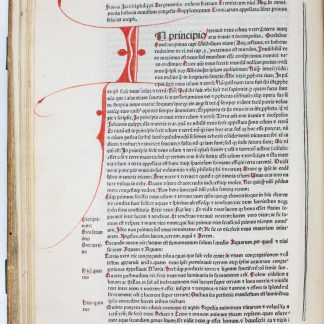The first world chronicle to include bio-bibliographies of Arab scholars
Supplementum chronicarum. (With additions by Barillas Bergomas).
Small folio. (23), 358, (1) ff. 49 lines and headlines. Lombardic initials supplied in red, capital strokes and paragraph marks. Contemporary blindstamped pigskin over wooden boards. Traces of a vellum title label on upper cover; nail holes and discoloration from 10 now-lost metal corner- and centrepieces, pair of chased brass and leather fore-edge clasps.
€ 65,000.00
Second edition of a popular world chronicle by an Augustinian cleric, a fine copy in a monastic binding. In his chronicle Foresti proposed to bring together the most important historical facts from each year, starting with Genesis. Although he often placed legend and myth on the same plane as documented history, Foresti's chronicle was the first world history to include short bio-bibliographies of Arab scholars. These were not taken over from any of the principal sources cited by the author (Vincent of Beauvais, Boccaccio, Platina, and St Anthony of Florence), attesting to the breadth of his scholarship (cf. Hasse, Success and Suppression: Arabic Sciences and Philosophy in the Renaissance [2016], p. 32). Six editions of Foresti's chronicle are recorded from 1483 to 1491, the last an Italian translation, all but the present edition printed in Venice. The author continued to revise and expand on the work: for the 1503 edition he would add an extra book bringing the account up to the present.
Bonino de Boninis de Ragusia, a Dalmatian cleric, had worked in Venice in 1479 before setting up a press in Verona (with Venetian types), then moving to Brescia. His productions were "dominated throughout by Venetian models and methods" (Scholderer, BMC). Beautifully printed, this edition contains numerous aids to the reader, presumably at least in part as instructed by the author. Two tables in quire aa comprise an alphabetical index of passages mentioning famous women (Foresti essentially plagiarized Boccaccio in his own work on the same subject, published in 1497), and an alphabetical index to cities named in the text. A double-rule chronological bar runs along every page, separating two calendars: on either side of the bar is printed, at the head of each annual section, the date since Creation and the Christian year. Finally, the quire register on the last leaf summarizes the contents of each gathering.
Würzburg, Benedictines of St. Stephen (contemporary inscription on front pastedown, "Iste liber pertinet ad S. Stephanum In herbipoli"; a few contemporary marginalia, mainly single words in books 2, 9 and 13). Latterly in the collection of the Aschaffenburg scholar and bookseller Bernd Pattloch (1940-2014) with his bookplate.
Small folio (209 x 311 mm). (23), 358, (1) ff. (fols. aa1 & b10 blank). 49 lines and headlines. Tables in 2 columns, quire register at end (T8r) in 4 columns, printed marginalia. Capital spaces. Double rules along inner margins of text and between table columns. Lombardic initials supplied in red, capital strokes and paragraph marks. Contemporary alum-tawed blindstamped pigskin over wooden boards, sewn on four double and 2 single cords, bound in the monastic shop of the Würzburg Benedictines (Kyriss 37 / Schunke, Schwenke-Slg. II, 317 / EBDB w000063), covers panelled with six vertical triple fillets including outer borders and four horizontal triple fillets, decorated with several stamps from that shop. Trace of a parchment title label on upper cover, nail holes and discoloration from 10 now-lost metal corner- and centrepieces, pair of chased brass and leather fore-edge clasps. Later shelfmark no. 126 in red ink on plain spine, small 20th century paper label; 15th century manuscript waste quire liners.
This copy was bound in the shop of the Würzburg Benedictine monks; the tools are: EBDB s004169, two birds on a lily; s004166 = Schunke, Schwenke-Slg. 379a, a banderole with the name of the monastery (san stef. mrt); s004167, a large rosette; s004170, a jumping dog (called a lion by Schunke); plus a diamond-shaped plant tool (38 x 27 mm), not found in these repertories.
Covers rubbed. Top of first blank leaf clipped, sheet a3.7 (a3 signed "a2") on a guard and evidently supplied from another copy, occasional very minor thumb-soiling, foxing to sheet D1.8, minor small marginal dampstains in quire L.
HC 2806*. Goff J-209. GW M10965. CIBN J-141. Walsh 3401. Bod-inc J-088. BMC VII 969. BSB-Ink I-122. Cf. Dizionario Bibliografico degli Italiani 48:801-803.

